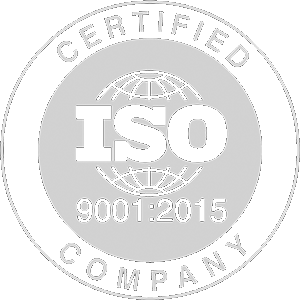In aerospace and defense, reliability is critical. Failure is simply not an option. PTFE aerospace and defense components are uniquely engineered to withstand the extreme conditions found in these sectors, including wide temperature fluctuations, high altitudes, pressure changes, and constant vibration.
PTFE delivers exceptional thermal stability, outstanding chemical resistance, and excellent electrical insulation, all while maintaining a lightweight profile crucial for flight efficiency.
This versatile material is extensively used in a variety of aerospace components, including fuel system parts, wire insulation, hydraulic seals, and structural elements in both commercial aircraft and military equipment. Its naturally low friction makes PTFE ideal for bearings and bushings, and its nonflammable, inert nature ensures safe performance in sensitive electronics and control systems.
- Lightweight Strength: Combines low weight with high durability, ideal for aircraft and satellite components.
- Nonflammable & Thermally Stable: Maintains structure and safety under extreme temperature fluctuations.
- Low Outgassing: Minimizes volatile emissions, critical for space and vacuum environments.
- EMI Shielding Support: Compatible with advanced coatings to reduce electromagnetic interference.
Benefits
-
Electrical Insulation: PTFE is widely used to insulate wires, cables, and connectors in aerospace systems, withstanding high voltages and extreme temperature variations.
-
Aircraft Interiors: Used in non-stick applications like cooking surfaces in aircraft galleys due to its easy-clean and chemical-resistant properties.
-
Anti-Icing Coatings: PTFE coatings applied to aircraft surfaces help prevent ice buildup, enhancing safety and performance in cold climates.
-
Bearings and Bushings: PTFE’s low friction and wear resistance make it perfect for bearings and bushings in landing gear and control mechanisms.
-
Heat Shields: PTFE materials are employed in heat shielding applications, particularly for spacecraft reentry protection, thanks to their high-temperature resistance.
-
Lining Materials: Pipes and containers that transport harsh chemicals such as rocket fuel benefit from PTFE linings due to their chemical corrosion resistance.
-
Lubrication: PTFE-based lubricants reduce friction and wear in moving aerospace components, extending service life.
-
Radar Absorbing Materials: Specialized PTFE composites contribute to radar stealth technology by reducing radar signatures on military aircraft.
-
Seals and Gaskets: PTFE’s low friction and chemical stability make it ideal for seals and gaskets used in engines and fuel systems.
-
Space Applications: PTFE is widely employed in thermal insulation, sealing, and specialized components in spacecraft due to its low outgassing and durability.
-
Films and Tapes: PTFE films and tapes serve anti-corrosion and anti-chafe roles in aerospace assemblies.
-
Thermal Insulation Fabrics: PTFE-coated fiberglass fabrics provide durable thermal protection in aircraft components exposed to high heat.
- Enhanced Flight Safety: Contributes to reliable, long-lasting performance under harsh aerospace conditions.
- Mission-Critical Reliability: Performs consistently in both defense systems and commercial aircraft.
- Weight Reduction: Supports fuel efficiency and improved payload capacity.
- Resistance to Harsh Chemicals: Withstands exposure to jet fuels, hydraulic fluids, and solvents.
PTFE materials contribute to the reliability and safety of aerospace and defense systems, offering unmatched performance in mission-critical environments.
